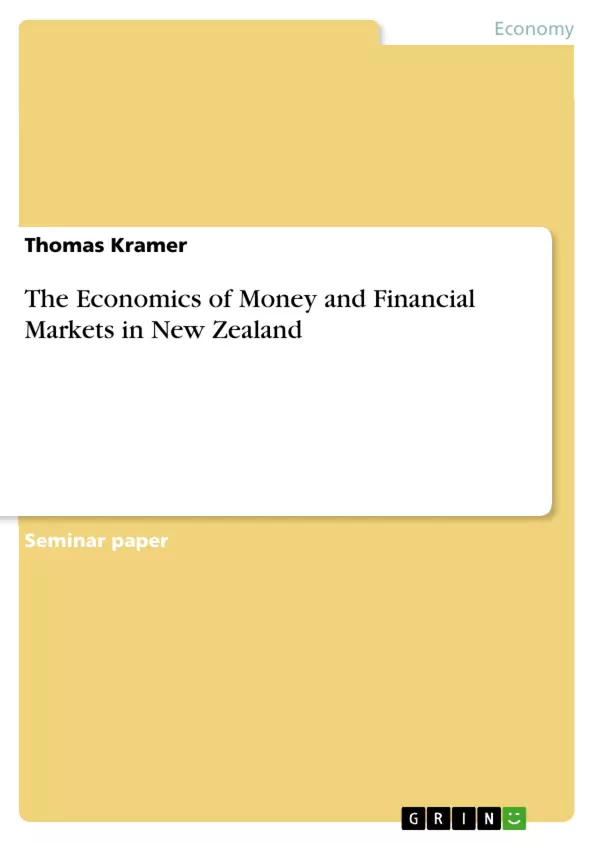It is an aim of a financial market to provide a source of finance to particular target groups. This section deals largely with the financial instruments used by the market participants to raise funds, how these instruments are issued and how they are traded.
The participants in the money and bond market are investors and borrowers. To highlight financial instruments from the borrowers′ point of view it makes sense to divide the group of borrowers in two distinct categories:
The `Crown′ market consists of the Reserve Bank and the central government whereas the borrowers in the `Non-Crown′ market are financial intermediaries such as banks, corporations, state owned enterprises, local authorities, etc. as you can see in the table above. (Potter, 2000 [A]; Potter, 2000 [B]) The financial instruments in these two markets will be analysed separately in the sections to come:
The `Crown′ market consists of the Reserve Bank and the central government whereas the borrowers in the `Non-Crown′ market are financial intermediaries such as banks, corporations, state owned enterprises, local authorities, etc. as you can see in the table above. (Potter, 2000 [A]; Potter, 2000 [B])
The financial instruments in these two markets will be analysed separately in the sections to come:
Inhaltsverzeichnis (Table of Contents)
- Financial Market Instruments for New Zealand
- Crown Debt Instruments
- Government Stock
- Treasury Bills
- Reserve Bank Bills
- Kiwi Bonds
- Government Bond Coupons
- Inflation-Indexed Bonds
- Non-Crown Debt Instruments
- Corporate and State Owned Enterprise Bonds
- Bills of Exchange
- Promissory Notes
- Certificate of Deposit
- Crown Debt Instruments
- Major Trends in the NZ Financial Market
- Importance of a Financial System's Stability
- Introduction
- The Importance of Financial Markets
- Sources of Financial System Problems
- Surveillance of Financial Instability
- Conclusion
- References
Zielsetzung und Themenschwerpunkte (Objectives and Key Themes)
This assignment provides an in-depth analysis of the financial market instruments used in New Zealand, exploring both Crown and Non-Crown debt instruments. It aims to provide a comprehensive understanding of how these instruments are issued and traded, and how they contribute to the overall stability of the financial system.
- Financial market instruments and their role in raising funds
- Differences between Crown and Non-Crown debt instruments
- The importance of a stable financial system
- Key factors affecting the stability of financial markets
- The role of the Reserve Bank in maintaining financial stability
Zusammenfassung der Kapitel (Chapter Summaries)
The first chapter examines the various financial market instruments used in New Zealand, focusing on the distinction between Crown and Non-Crown debt instruments. It discusses the issuance and trading of these instruments, highlighting the specific characteristics of each instrument. Chapter two delves into the importance of a stable financial system and explores the potential sources of instability. It examines the various mechanisms and strategies used to monitor and manage financial instability, including the role of the Reserve Bank.
Schlüsselwörter (Keywords)
This assignment focuses on financial market instruments, Crown debt, Non-Crown debt, financial system stability, Reserve Bank, monetary policy, and financial regulation.
- Quote paper
- Thomas Kramer (Author), 2000, The Economics of Money and Financial Markets in New Zealand, Munich, GRIN Verlag, https://www.grin.com/document/1898



